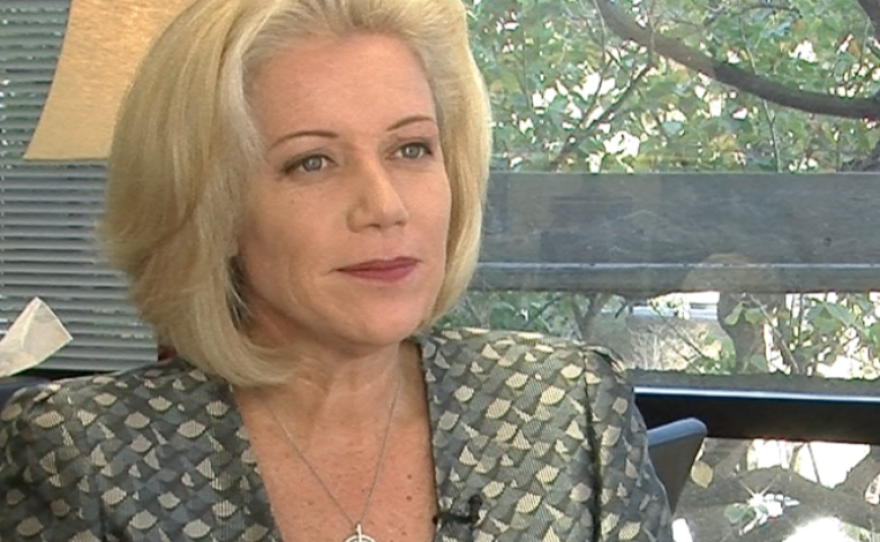When San Diego Hospice filed for bankruptcy and closed its doors for good in 2013, it was amid allegations the venerable institution owed the federal government more than $110 million in false Medicare claims.
The hospice was accused of providing care to people who were not terminal — in other words, not dying within the six months Medicare prescribed for the hospice benefit.
Kathleen Pacurar, CEO of the hospice, told board members there was no alternative but to shut down.
Three years later, the federal government answered the Freedom of Information request submitted by inewsource and KPBS, and released the Medicare audit. The results are damning, but not nearly as dire as the public and board of directors of San Diego Hospice were led to believe.
Key officials now believe the hospice could have survived the scrutiny and the financial hit.
The audit found Medicare overpaid San Diego Hospice more than $10 million in Medicare billings over about a two-year period, a fraction of what was predicted. But it also found that patients were in hospice for an average of two years, four times longer than the six-month terminal prognosis required to receive the benefit.
inewsource recently showed the results of the audit to sources close to the story. None had previously seen the audit, including Pacurar, the hospice CEO who recommended the shutdown.
Some said the hospice never should have closed its doors.
“Ten million dollars was not a reason to shut a program down,” said J. Donald Schumacher, president and CEO of the National Hospice and Palliative Care Organization.
San Diego Hospice “was the mother ship in many ways of our industry, and I think it could have been handled much differently,” Schumacher said.
Laurel Herbst, the hospice’s founding medical director, agreed. “Under different leadership, it (San Diego Hospice) would have survived,” she said.
At its peak, San Diego Hospice cared for 1,000 terminally ill patients a day. It was a national founder and leader in hospice care. In the region, it was revered and supported by philanthropists, with McDonald’s heiress Joan Kroc among its largest benefactors.

The public dismantling of the hospice began in November 2012, when Pacurar, who became CEO in 2010, took the unusual step of going to The San Diego Union-Tribune to tell editorial staff the hospice was in the middle of a Medicare audit and may have to return millions of dollars to the federal government. She told hospice board members that number could be $50 million.
The story landed on the front page, outlining how Pacurar planned to lay off employees, although she hadn’t seen the audit results.
“The organization, after the first of the year, will look extraordinarily different than it does today,” Pacurar told the U-T.
“It will be smaller. It will focus solely on the great care of hospice patients,” she said.
A day later, two top executives resigned, and weeks later the hospice shut down its Hillcrest inpatient hospital.
The organization filed for bankruptcy, and on Feb. 13, 2013, Pacurar announced that after 30 years it would shut down, citing the unresolved Medicare audit.
"In our circumstance, the lack of interactions (with Medicare) and information has truly caused us to be in the situation we're facing today," Pacurar told inewsource at the time.
The final document inewsource received was dated 2014, a year after the hospice shut down.
Pacurar, reached by phone last week, said she has never seen the audit and was informed of the results by an inewsource reporter.
“I don’t know what to say about it,” she said.
Medicare never contacted her and never gave her the bottom line of what was owed, she said.
When asked why she told board members it could be as much as $50 million, she said she didn’t know “which ones (media stories) to believe.”
“I have no idea,” she said.
The federal government referred to the $50 million estimate Pacurar had given board members in one bankruptcy court document.
“Debtor itself has estimated its liability to the United States at $50 million,” attorneys for the government wrote.
The Department of Justice, which claimed in Bankruptcy Court that San Diego Hospice owed it $112 million, declined to comment for this story because related litigation is pending. Bankruptcy proceedings are winding down, but as inewsource reported in 2014, the government had reached a settlement with the hospice. It received $1 million of the $16 million the hospice has in assets.

The results of the audit are likely moot considering the hospice no longer exists and the statute of limitations for filing fraud charges has passed. When asked whether anyone is on the hook for $10 million, a Medicare spokesman said the government agency had no further comment on the matter.
Herbst, the founding medical director of the hospice in 1978, held the position until February 2011 when Pacurar became CEO and asked Herbst to retire. Until now, Herbst was afraid to speak publicly about the audit and the bankruptcy, worried she could be prosecuted under the false claims act as a person accountable for providing care for those whom the government determined ineligible.
It’s been five years since she left her post, so she can no longer face charges.
“I would have appealed it (the results of the audit) case by case,” Herbst said.
She’s adamant San Diego Hospice did nothing wrong, and she said had she been given the chance she would have demonstrated to Medicare that all of the hospice’s patients fit the terminal definition.
“I was pretty angry when this all came down,” Herbst said. “It was my life’s work.”
Herbst said she successfully appealed the results of a 1997 government audit by the Office of the Inspector General for Health and Human Services, which found 37 patients shouldn’t have been in care.
inewsource first reported in 2013 that those who knew the inner workings of San Diego Hospice said the organization was founded on the principle that money should never matter in someone’s dying days. And it continued under that philosophy until 2011, when senior management, which included Herbst, changed and the federal government began its crackdown on hospices.
Pacurar said she inherited the problems that led to the federal scrutiny of San Diego Hospice, and she did her best to lead it through its most difficult times. She said she has no regrets.
“It was unfortunate I had to be part of the dismantling of the organization, but with Scripps coming in purchasing the building and other hospices being able to grow out of it, I’m very proud of that.”
Scripps Health began offering hospice care the day after San Diego Hospice filed for bankruptcy and Pacurar publicly endorsed it for doing so. Scripps also hired 74 San Diego Hospice employees who had lost their jobs in the shutdown, and it eventually bought San Diego Hospice’s Hillcrest location. Scripps now has an average daily census of 180 hospice patients, according to a spokesman. And the Hillcrest location houses the administrative offices for Scripps home health, hospice and home-based care.
Medicare had little to say about the results of the audit or whether there were other investigations that may provide insight as to why the federal government made such an enormous claim against San Diego Hospice in its bankruptcy filing.
Schumaker, from the National Hospice and Palliative Care Organization, said he believes the information Pacurar gave to the news media early on in the scandal was unintentionally incorrect.
“I think there was nothing malicious in what she was doing. It was her attempt to resolve the issue. But I think it could have gone a different way had there been a different CEO,” he said.
Schumaker also believes San Diego Hospice could have negotiated a settlement with Medicare, which is what hospices across the country have done when they found themselves in a similar predicament.
While the institution is now gone, Herbst is thankful for its legacy and a lifetime she invested in caring for dying patients.
“That training is still going on in the world from the people that I taught,” she said. “The loss is terrible for the community, but the long-term impact is still going to be there for many, many years for the whole country.”







